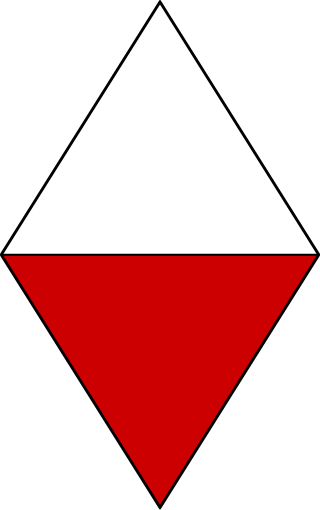
The 42nd Infantry Division was an infantry division of the British Army. The division was raised in 1908 as part of the Territorial Force (TF), originally as the East Lancashire Division, and was redesignated as the 42nd Division on 25 May 1915. It was the first TF division to be sent overseas during the First World War. The division fought at Gallipoli, in the Sinai desert and on the Western Front in France and Belgium. Disbanded after the war, it was reformed in the Territorial Army (TA), in the Second World War it served as the 42nd Infantry Division with the British Expeditionary Force (BEF) and fought in Belgium and France before being evacuated at Dunkirk. The division was later reformed in the United Kingdom and, in November 1941, was converted into the 42nd Armoured Division, which was disbanded in October 1943 without serving overseas. A 2nd Line duplicate formation, the 66th Infantry Division, was created when the Territorials were doubled in both world wars.

The 2nd New Zealand Division, initially the New Zealand Division, was an infantry division of the New Zealand Military Forces during the Second World War. The division was commanded for most of its existence by Lieutenant-General Bernard C. Freyberg. It fought in Greece, Crete, the Western Desert and Italy. In the Western Desert Campaign, the division played a prominent role in the defeat of German and Italian forces in the Second Battle of El Alamein and the British Eighth Army's advance to Tunisia.

Operation Crusader was a military operation of the Western Desert Campaign during the Second World War by the British Eighth Army against the Axis forces in North Africa commanded by Generalleutnant (Lieutenant-General) Erwin Rommel. The operation was intended to bypass Axis defences on the Egyptian–Libyan frontier, defeat the Axis armoured forces near Tobruk, raise the Siege of Tobruk and re-occupy Cyrenaica.
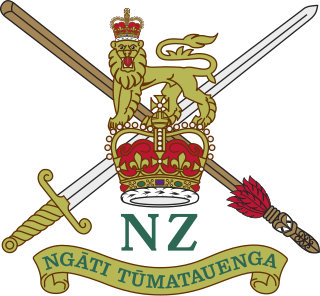
The New Zealand Expeditionary Force (NZEF) was the title of the military forces sent from New Zealand to fight alongside other British Empire and Dominion troops during World War I (1914–1918) and World War II (1939–1945). Ultimately, the NZEF of World War I became known as the First New Zealand Expeditionary Force. The NZEF of World War II was known as the Second New Zealand Expeditionary Force (2NZEF).
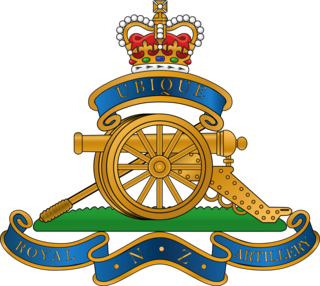
The Royal Regiment of New Zealand Artillery is the artillery regiment of the New Zealand Army. It is effectively a military administrative corps, and can comprise multiple component regiments. This nomenclature stems from its heritage as an offshoot of the British Army's Royal Artillery. In its current form it was founded in 1947 with the amalgamation of the regular and volunteer corps of artillery in New Zealand. In 1958 in recognition of services rendered it was given the title the Royal Regiment of New Zealand Artillery.

The 3rd New Zealand Division was a division of the New Zealand Military Forces. Formed in 1942, it saw action against the Japanese in the Pacific Ocean Areas during the Second World War. The division saw action in the Solomon Islands campaign during 1943–1944, during which it undertook landings on Vella Lavella, the Treasury Islands and the Green Islands. Due to manpower shortages, for most of its existence the division consisted of only two infantry brigades in addition to support personnel, with its third brigade being disbanded shortly after formation. In 1944, manpower shortages in the New Zealand economy became acute led to the disbandment of the division. The majority of its manpower was returned to civilian employment, although around 4,000 men were sent to Italy to reinforce the 2nd Division, seeing further action before the end of the war in May 1945.
The 28th Infantry Brigade was a British Army formation which served during the First World War, the Second World War, The Malayan Emergency and Indonesian Confrontation.

The 9th Armoured Division was an armoured division of the British Army, raised during the Second World War. It never saw active service during the war as a complete division.

The Royal Wiltshire Yeomanry (RWY) was a Yeomanry regiment of the Kingdom of Great Britain and the United Kingdom established in 1794. It was disbanded as an independent Territorial Army unit in 1967, a time when the strength of the Territorial Army was greatly reduced. The regiment lives on in B Squadron of the Royal Wessex Yeomanry.
This is the order of battle for the ground forces involved in Operation Crusader, a World War II battle between the British Commonwealth and the European Axis Powers of Germany and Italy in North Africa between 18 November – 30 December 1941.

The 3rd Field Regiment, Royal New Zealand Artillery was a territorial force Field Artillery regiment of the New Zealand Army. The unit was formed in 1921 and consisted of the field artillery batteries based in the South Island. The regiment remained in New Zealand during the Second World War and was tasked with training reinforcements for 2nd New Zealand Expeditionary Force. The regiment was disbanded in 1990.
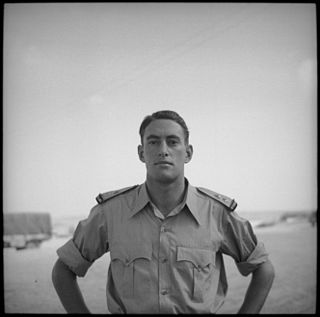
Lieutenant General Sir Leonard Whitmore Thornton, was a senior officer in the New Zealand Army.

Major-General Sir Stephen Cyril Ettrick Weir, was a New Zealand military leader and diplomat.

Major General Graham Beresford Parkinson, was a professional soldier in the New Zealand Military Forces who served during the First and Second World Wars.
When the Second World War broke-out, the Dominion of Newfoundland was a Dominion governed directly from the United Kingdom via the Commission of Government. As Newfoundland was being administered by the Commission of Government, and had no functioning parliament, the British declaration of war on Germany automatically brought Newfoundland into a state of war with Germany on 3 September 1939.

The 4th Field Regiment was an artillery regiment of the New Zealand Military Forces raised during the Second World War. It saw service as part of the 2nd New Zealand Division during the Greek, North African, Tunisian and Italian campaigns, before being disbanded in January 1946.

The 6th Field Regiment was an artillery regiment of the New Zealand Military Forces raised during the Second World War. It saw service as part of the 2nd New Zealand Division during the Greek, North African, Tunisian and Italian campaigns, before being disbanded in January 1946.
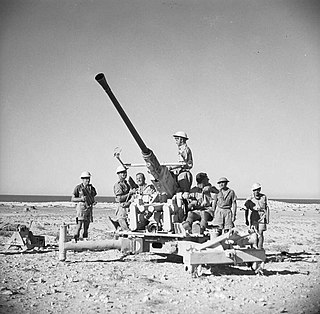
The 14th Light Anti-Aircraft Regiment was an air defence regiment of the New Zealand Military Forces raised during the Second World War. It saw service as part of the 2nd New Zealand Division during the North African, Tunisian and Italian campaigns, before being disbanded in October 1944.

Brigadier Raymond Candlish Queree, was a senior officer in the New Zealand Military Forces during the Second World War and the postwar period.

The 17th Field Regiment was an artillery regiment of the New Zealand Military Forces raised during the Second World War. The regiment was formed on 2 September 1942 at Papakura Military Camp and consisted of 35 and 37 Batteries, which had formerly operated as independent batteries based in Fiji. In October they were joined by 12 Battery from the Territorial Force and the regiment departed for New Caledonia at the end of December. In September and October 1943, 17th Field Regiment took part in the Land Battle of Vella Lavella as part of the 14th Brigade Group and in February 1944 also took part in the Battle of the Green Islands. Due to manpower shortages, 17th Field Regiment was effectively disbanded in October 1944 along with the rest of the 3rd Division, although a small accounting party continued to exist until April 1945 to complete regimental records. Many of the men were sent with the 14th and 15th reinforcements to the 2nd New Zealand Division.

















